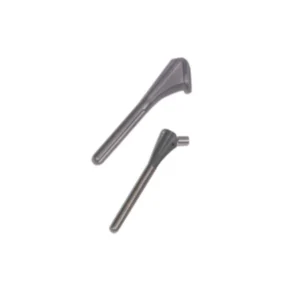Precision Forging: A Comprehensive Guide
Precision forging is a critical process in the manufacturing industry, offering numerous advantages over conventional forging methods. This blog explores the intricacies of precision forging, comparing it to traditional forging, detailing the manufacturing process, and highlighting its classifications and features.
What is Precision Forging?
Precision forging is a manufacturing process where metal is shaped under high pressure to produce high-accuracy parts with minimal machining required. Unlike conventional forging, which often necessitates significant post-processing, precision forging aims to achieve near-net shape parts that are closer to the final dimensions and surface finish.
Precision Forging vs. Conventional Forging
Precision Forging
Advantages:
- High Accuracy: Precision forging produces parts with tighter tolerances and superior surface finishes.
- Reduced Machining: Minimal post-forging machining is required, reducing production costs and time.
- Material Efficiency: Higher material utilization rates, resulting in less waste.
- Improved Mechanical Properties: Enhanced strength and durability due to the controlled forging process.
Disadvantages:
- Higher Initial Cost: Requires more sophisticated tooling and equipment.
- Complexity: More complex process control is needed.
Conventional Forging
Advantages:
- Versatility: Suitable for a wide range of materials and part sizes.
- Lower Initial Investment: Generally requires less specialized equipment and tooling.
- Established Process: Well-understood and widely used in various industries.
Disadvantages:
- Lower Precision: Often requires additional machining to achieve final dimensions.
- Higher Waste: Less efficient material usage leading to more scrap.
- Variable Quality: Inconsistent mechanical properties and surface finish.
How to Make Precision Forging
Design and Simulation:
CAD Modeling: Design the part using computer-aided design (CAD) software.
Finite Element Analysis (FEA): Simulate the forging process to predict material flow and identify potential defects.
Tooling Design:
Die Design: Create precise dies that match the CAD model of the part.
Tool Manufacturing: Fabricate the dies using high-quality materials to withstand the forging process.
Material Preparation:
Selection: Choose the appropriate metal based on the desired properties of the final part.
Preheating: Heat the metal to a specific temperature to improve its ductility.
Forging:
Press Forging: Use a high-pressure forging press to shape the heated metal within the dies.
Controlled Environment: Maintain strict control over temperature and pressure to ensure consistency.
Post-Forging Operations:
Trimming: Remove excess material or flash from the forged part.
Heat Treatment: Enhance the mechanical properties through processes like quenching and tempering.
Surface Treatment: Apply coatings or finishes to improve corrosion resistance and appearance.
Quality Control:
Inspection: Conduct thorough inspections using techniques like dimensional measurement, hardness testing, and non-destructive testing (NDT).
Final Adjustments: Make any necessary adjustments to ensure the part meets all specifications.
Precision Forging Classification and Features
Closed Die Forging:
Description: Metal is compressed between two dies with a cavity that shapes the material.
Features: Produces complex shapes with high precision and excellent surface finish.
Open Die Forging:
Description: Metal is shaped between flat or simple contoured dies.
Features: Suitable for larger parts with simpler shapes, offering high strength and toughness.
Hot Precision Forging:
Description: Forging at elevated temperatures to improve material ductility.
Features: Allows for the shaping of difficult-to-form materials, enhancing mechanical properties.
Cold Precision Forging:
Description: Forging at or near room temperature to improve accuracy.
Features: Produces parts with excellent dimensional accuracy and surface finish without the need for heat treatment.
Features
Near-Net Shape Capability: Produces parts that are very close to the final shape, reducing the need for extensive machining.
High Strength and Durability: Parts exhibit superior mechanical properties due to the precise control of the forging process.
Material Versatility: Can be used with a wide range of materials, including steels, aluminum, titanium, and superalloys.
Surface Integrity: Results in excellent surface finish and integrity, often eliminating the need for additional finishing operations.
Cost Efficiency: While the initial setup cost is higher, the overall production cost can be lower due to reduced material waste and machining time.
Conclusion
Precision forging offers numerous benefits over conventional forging, including higher accuracy, reduced machining, and improved material efficiency. By understanding the detailed process and classifications of precision forging, manufacturers can leverage this advanced technology to produce high-quality parts that meet the stringent demands of modern industries.
For more information on precision forging and our high-quality forging solutions, visit Welleshaft.











Reviews
There are no reviews yet.